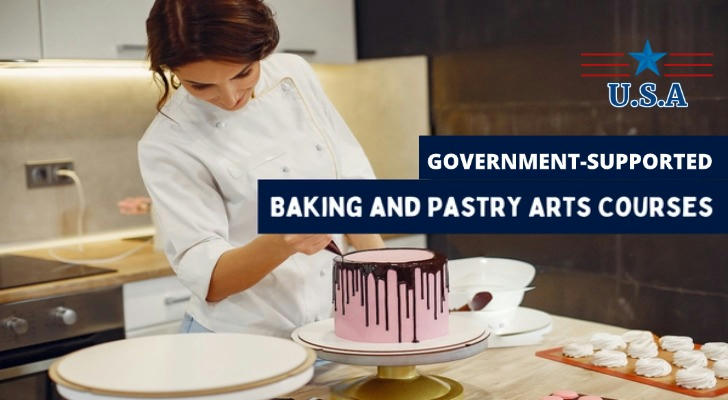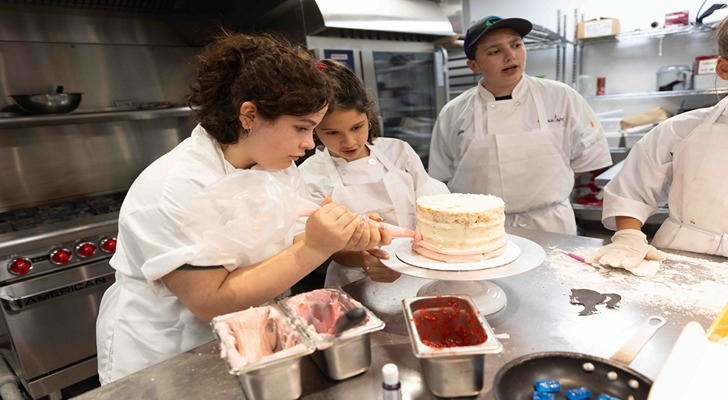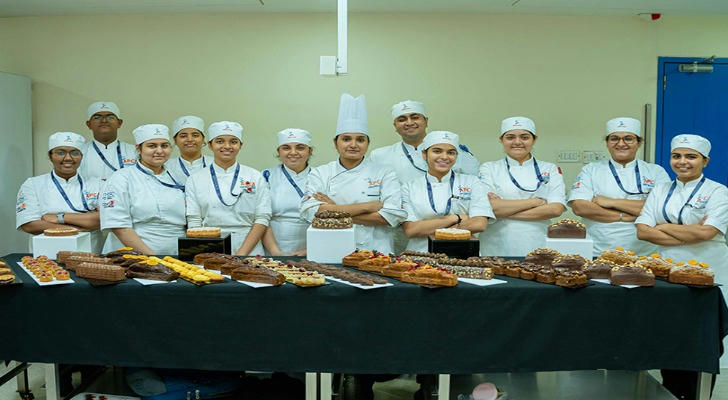From kitchen to career: How to change your life through pastry courses supported by the US government?
In the United States, there is a long-term shortage of pastry chefs, and the dessert market continues to grow. If you love cakes and desserts and want to learn a promising craft, you can now master pastry skills through government-supported training programs and embark on the road to employment or entrepreneurship-whether you are a new immigrant, a beginner, or a member of a low-income family.

Ⅰ. What is a pastry course?
Pastry courses are a type of vocational training program that focuses on dessert making and baking skills, These courses are not only suitable for people who are interested in improving their skills, but also welcome new students with zero foundation.The course content focuses on practical and employment-oriented, including:
Basic baking skills: such as the production process of bread, cakes, cookies, pies, etc.
Dessert decoration and plating design: Learn how to make exquisite works
Food safety and kitchen regulations: Familiar with the operating rules of commercial kitchens
Menu planning and cost control: Lay a solid foundation for future employment or entrepreneurship
The teaching method focuses on hands-on operation, and some projects also arrange practical training or industry internships; more importantly, these courses are offered in many cities and communities across the United States, and the learning location is usually flexible, so that you can start this learning journey in a familiar environment.
Ⅱ. Where can I get government-supported pastry courses?
The US government supports people to learn professional skills through multiple programs, among which pastry courses are common in the following projects:
✅ 1. WIOA (Workforce Innovation and Opportunity Act)
Applicable to the unemployed, low-income people, new immigrants, veterans, etc. WIOA-approved pastry courses can receive government-provided learning subsidies and employment support.
✅ 2. Job Corps (Youth Career Development Program)
For young people aged 16 to 24, it provides training courses in pastry or catering, including accommodation, food, learning and employment counseling.
✅ 3. Community colleges and adult education programs
For example, California's LATTC and New York's Kingsborough Community College offer employment-oriented pastry courses and can apply for government learning subsidies such as Pell Grant.
✅ 4. Non-profit organizations in cooperation with the government
Organizations such as Hot Bread Kitchen (New York) and FareStart (Seattle) provide pastry skills training, certificates and employment resources for low-income people and immigrants.

Ⅲ. Benefits of completing a pastry course
Participating in a government-supported pastry course not only allows you to acquire skills, but also enjoys the following practical benefits:
Obtain professional certification: such as food safety certificate (ServSafe), which enhances job hunting advantages
Employment recommendation or internship opportunity: Many institutions have cooperation with local bakeries, hotels, and cafes
Accumulate local experience: Kitchen practice and simulation projects in the course help to integrate into real work scenarios
Language and workplace ability improvement: Many courses will include basic English training and job search guidance
Ⅳ. What can the course bring to you?
Pastry courses change not only skills, but also lifestyles. Many graduates said that they:
Found full-time or part-time baking jobs
Started to take orders for birthday cakes, holiday desserts, etc., and started a sideline income
Build professional confidence, dare to express and try new opportunities
Gradually plan your own small dessert brand or home kitchen studio
If you are looking for skills that can actually bring income and hope, pastry courses are a path worth trying

Ⅴ. True story from student to entrepreneur
Maria was originally a full-time mother in the Bronx. She was from Mexico, had no education, did not know English, and supported her family by working part-time. By chance, she heard that Hot Bread Kitchen offered a pastry training program specifically for women like her.
After signing up, she learned basic baking, dessert decoration and food safety, and participated in a practical module in a cooperative dessert kitchen. After the course, she went to work in a bakery in Brooklyn and took orders to make birthday cakes in the evening. In less than a year, her monthly income doubled and she accumulated her own customer base.
Maria said: "I never thought that I could support my family with my hobbies. It was this course that made me believe in myself again and found my place in the United States."
Ⅵ. How to apply for a pastry course?
Confirm eligibility: meet age, income or employment status requirements
Find courses: visit the official website or contact the local American Job Center directly to learn about the list of pastry courses
Submit an application: prepare identification and necessary information, and fill out the application form
Take the course: Wait for admission, attend classes on time, and some programs provide employment guidance
⭐ A craft, a chance to change your life
In the United States, mastering a skill is equal to having an opportunity. Pastry courses can not only satisfy your love of food, but also bring career changes, financial independence and a new direction in life. No matter which city or community you are in, you will have the opportunity to find training resources and support channels that suit you.
If you also want to improve your life by learning pastry skills, you might as well find out what government-supported training programs are available locally - many courses can be started in schools, community centers or training institutions that you can easily reach.
